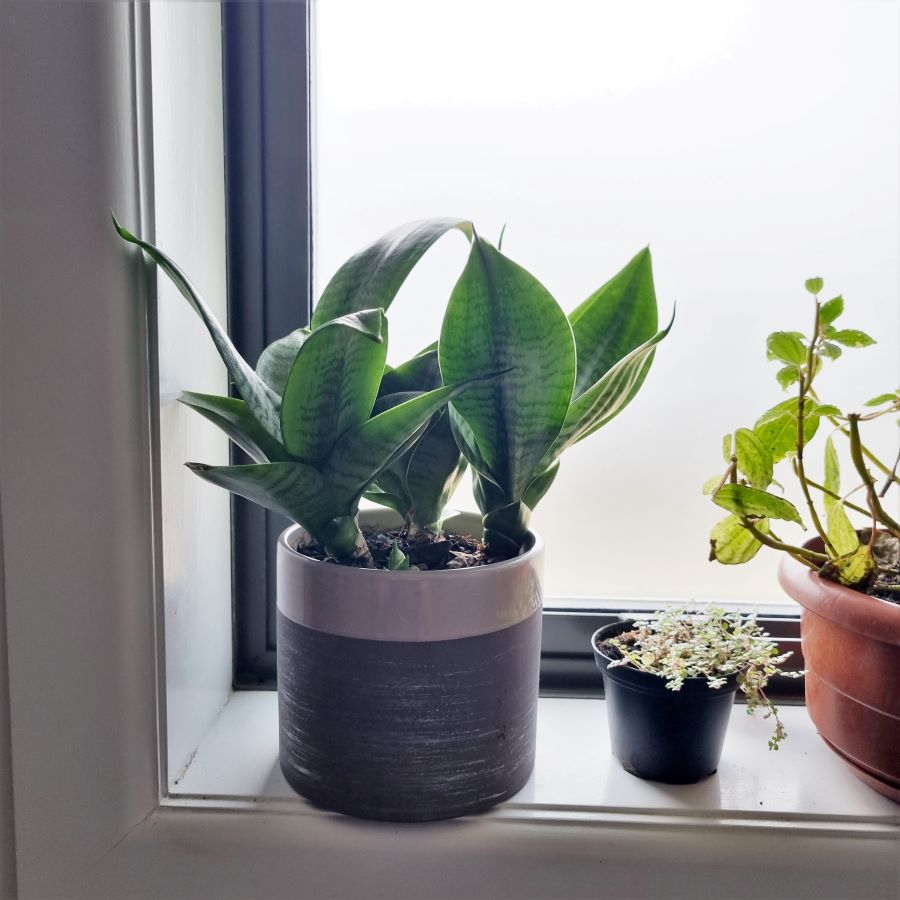If you’ve recently added a snake plant to your home, congratulations! These low maintenance plants are perfect for anyone who doesn’t have a green thumb. But do you know how to care for your snake plant? One of the most common questions we get is do snake plants like humidity, and how to maintain the right humidity? Today, we’re going to answer that question and give you some pointers on getting the right level of humidity.
*This post may include affiliate links. When you purchase items from these links, we will receive a small commission, at no extra cost to you, to help support this website. Thank you for your support! Read more ->
Snake Plant Humidity – What Do They Like?
Like said above (and in the title), snake plants are a favorite house plant because they are low maintenance. Which means one of the things you don’t really need to worry about with this plant is humidity. This isn’t a plant you have to specifically go out and buy a humidifier/dehumidifier like some other plants. So once you read this article, you can basically forget having to worry about snake plant humidity needs.
I love snake plants because they can survive just about any light (read about low light plants here) and humidity in a home. I’ve had snake plants while living in dry climates and humid climates, and have never once had an issue with humidity.
With saying that, let’s look at low and high humidity with your snake plant.
Find out what your area in the USA’s humidity is like.
Snake Plant Humidity – Too Little
You’re more likely to run into problems if you have too little humidity with your snake plant. If the air is too dry, your snake plant will start to show it by having brown tips on the leaves. This is something I’ve noticed in occasionally while living in Colorado (which is a very dry and arid climate), but there’s a fairly easy fix!
How To Increase the Humidity

There are 3 really easy fixes if you live in a dry climate to keep your snake plant happy:
- Grow multiple plants near each other, as this increases humidity in the nearby air.
- Put your snake plant in your bathroom (if you have a window in there). Bathrooms are almost always the most humid room in the house.
- Water your snake plant more often. Don’t overwater, but water it a bit more often since it’s not getting water from the air. Keep reading – underwatered snake plants
You may also be interested in: 5 Easy Plant Humidifiers, Do snake plants need drainage holes?
Do Snake Plants Like To Be Misted?
If you’re really concerned with your snake plant not getting enough humidity, you might be wondering if it needs to be misted. The answer is no, snake plants don’t like to be misted. There’s no need to mist this plant.
(This is called a low maintenance plant for a reason!)
Snake Plant Humidity – Too Much
On the other hand, you might also be wondering if too much humidity is bad for a snake plant. And the answer to that is also no. Currently I live in a climate that gets very humid during some seasons, and my snake plants still thrive.
The only time you might run into problems with too much humidity is if you’re overwatering your snake plant. If the roots are sitting in water, they will start to rot. But as long as you’re not overwatering, too much humidity won’t hurt your snake plant.
How to Decrease Humidity for Your Snake Plant
You really don’t need to decrease the snake plant’s humidity. If you are in a very humid climate, just be sure to check the soil moisture before watering, because you don’t want to overwater. You can also put it in a slightly sunnier spot in your home to help evaporate some of the moisture.
Keep reading: 8 dehumidifying plants, Snake plant varieties
Summary – Do Snake Plants Like Humidity?
So, do snake plants like humidity? The answer is a little bit of both – they don’t need high humidity, but can survive in low humidity environments as well. You can increase the humidity for your snake plant by growing it near other plants, putting it in your bathroom, or watering it more often. And if you live in a very humid climate, be sure to check the soil moisture before watering to avoid overwatering. But really, this shouldn’t be something you worry about too much with your snake plant!



